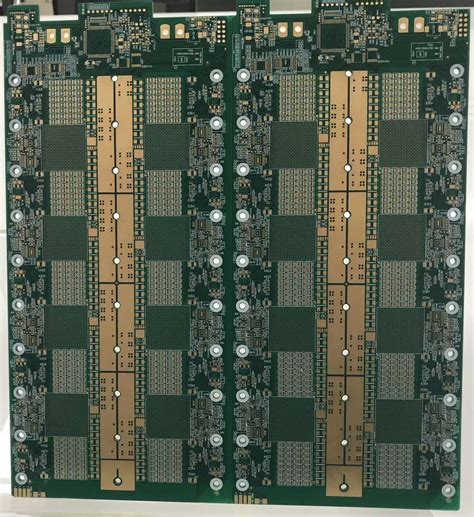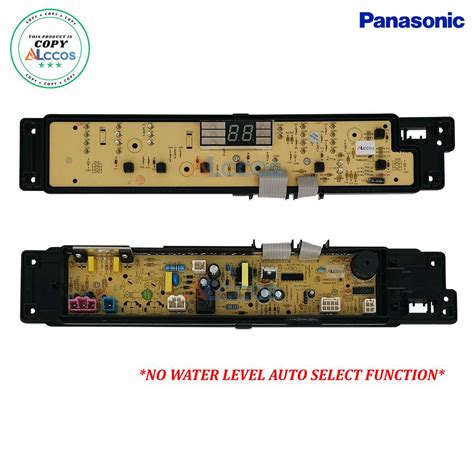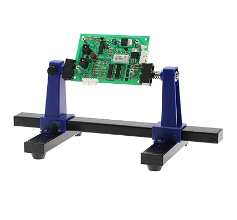Panasonic PCB Board Advancements: MEGTRON 6 High-Speed Performance

Key Takeaways
When selecting PCB manufacturing companies for high-frequency applications, Panasonic’s MEGTRON 6 stands out as a benchmark for ultra-low signal loss and high-speed performance. Designed to meet 5G and advanced networking demands, this material reduces PCB manufacturing cost over time by minimizing energy dissipation and improving signal integrity.
"Choosing the right substrate is critical for 5G infrastructure—MEGTRON 6’s dielectric properties ensure reliable data transmission even at millimeter-wave frequencies."
For PCB manufacturing business stakeholders, here’s a quick comparison of MEGTRON 6 against traditional materials:
| Property | MEGTRON 6 | Standard FR-4 |
|---|---|---|
| Dielectric Constant (Dk) | 3.3 | 4.5 |
| Loss Tangent (Df) | 0.0015 | 0.020 |
| Thermal Conductivity | 0.6 W/m·K | 0.3 W/m·K |
| Max Frequency Support | 100+ GHz | <10 GHz |
HDI design capabilities further enhance its value, enabling compact layouts for mobile devices without compromising thermal stability. If you’re evaluating PCB manufacturing options, prioritize materials with verified industry certifications (e.g., IPC-4101/126) to ensure compatibility with high-density interconnects.
Tip: When optimizing PCB manufacturing cost, consider lifecycle performance—materials like MEGTRON 6 reduce rework risks in harsh environments, lowering long-term operational expenses.

Panasonic MEGTRON 6 PCB Innovations
When selecting materials for high-frequency applications, PCB manufacturing companies prioritize solutions that balance performance, reliability, and PCB manufacturing cost. Panasonic’s MEGTRON 6 series addresses these demands with groundbreaking innovations tailored for 5G infrastructure, advanced networking systems, and mobile devices. Its ultra-low dielectric loss (Df ≤ 0.0015 at 10 GHz) ensures minimal signal degradation, critical for high-speed data transmission.
The material’s thermal stability reduces warping risks during PCB manufacturing, enabling tighter layer alignment in high-density interconnect (HDI) designs. This becomes particularly valuable for multilayer boards requiring precise impedance control—a key factor in minimizing rework and optimizing production efficiency. For businesses evaluating PCB manufacturing business scalability, MEGTRON 6’s compatibility with laser drilling and microvia technologies simplifies complex routing, cutting assembly time by up to 20% compared to traditional FR-4 alternatives.
Additionally, its low thermal expansion coefficient ensures reliability under extreme temperature fluctuations, reducing long-term maintenance costs. Panasonic’s technical documentation highlights how these advancements align with global standards for high-frequency applications, making it a strategic choice for enterprises aiming to future-proof their designs. By integrating MEGTRON 6 into your supply chain, you gain access to a material engineered to meet both current and emerging connectivity challenges.

High-Speed PCBs for 5G Systems
When designing next-generation 5G infrastructure, signal integrity and latency reduction become non-negotiable priorities. PCB manufacturing companies like Panasonic address these demands with materials such as MEGTRON 6, engineered to minimize dielectric losses and maintain stable performance at millimeter-wave frequencies. This high-speed laminate achieves an ultra-low dissipation factor (Df ≤ 0.0015 at 10 GHz), ensuring minimal signal distortion even in densely packed RF modules.
For 5G base stations and mobile devices, managing pcb manufacturing cost while scaling production requires balancing material performance with process efficiency. Panasonic’s MEGTRON 6 optimizes this equation by supporting finer trace widths and tighter impedance control, reducing the need for costly post-fabrication corrections. Its low thermal expansion properties also enhance reliability in temperature-fluctuating environments, a critical factor for outdoor 5G deployments.
In the pcb manufacturing business, transitioning to advanced substrates often raises concerns about compatibility with existing assembly workflows. However, MEGTRON 6’s compatibility with standard multilayer lamination processes simplifies adoption, allowing manufacturers to upgrade 5G-focused production lines without overhauling equipment. This adaptability positions it as a strategic choice for businesses aiming to meet evolving industry standards while controlling operational overhead.
By integrating these innovations, pcb manufacturing for 5G systems shifts from merely keeping pace with technical requirements to actively enabling faster data throughput and network scalability—a foundation for tomorrow’s connected ecosystems.
Ultra-Low Loss PCB Material Benefits
When designing high-frequency systems like 5G infrastructure or advanced networking hardware, minimizing signal degradation is critical. Panasonic’s PCB manufacturing expertise shines in its MEGTRON 6 material, which achieves ultra-low loss performance even at frequencies exceeding 40 GHz. This characteristic ensures signal integrity over longer traces, reducing the need for costly signal boosters or complex error correction protocols—a key advantage for PCB manufacturing companies aiming to optimize PCB manufacturing cost while maintaining reliability.
The material’s low dielectric dissipation factor (Df) directly translates to reduced heat generation, enabling thinner designs without compromising thermal stability. For businesses scaling their PCB manufacturing business, this means lighter, more compact devices that meet stringent industry standards. Additionally, MEGTRON 6’s balanced dielectric constant (Dk) minimizes impedance variations, simplifying impedance matching in high-speed circuits.
By integrating these properties, you gain a competitive edge in applications demanding precision, such as millimeter-wave communications or AI-driven data centers. The combination of ultra-low loss and robust thermal performance ensures your designs remain future-proof, aligning with evolving requirements for speed, efficiency, and miniaturization.
HDI Design in MEGTRON 6 PCBs
When designing high-density interconnect (HDI) layouts for advanced applications like 5G or mobile systems, PCB manufacturing demands precision to balance performance and miniaturization. Panasonic’s MEGTRON 6 leverages ultra-low loss materials and microvia stacking to achieve finer traces and tighter spacing, enabling faster signal transmission while reducing crosstalk. This becomes critical for PCB manufacturing companies aiming to meet the escalating requirements of networking hardware and high-speed data processing.
The material’s low dielectric loss (Df ≤ 0.0015 at 10 GHz) ensures minimal signal degradation, even in multi-layered HDI configurations. For businesses evaluating PCB manufacturing cost, MEGTRON 6 offers long-term value by minimizing retransmission errors and power consumption, which lowers operational expenses. Additionally, its thermal stability (Tg ≥ 180°C) supports high-reliability designs in compact form factors, a necessity for modern IoT devices or automotive electronics.
To optimize PCB manufacturing business workflows, the substrate’s compatibility with laser drilling and sequential lamination simplifies prototyping and scaling. Engineers can integrate blind/buried vias and via-in-pad structures without compromising mechanical integrity, ensuring robust performance under thermal cycling. By prioritizing HDI capabilities, Panasonic addresses the growing demand for boards that deliver both speed and durability—key factors for staying competitive in high-frequency markets.
PCB Thermal Management Solutions
Effective thermal management remains critical for ensuring the reliability of high-speed systems, particularly in applications like 5G infrastructure and advanced networking. PCB manufacturing companies prioritize materials with low thermal resistance to minimize heat buildup, a key factor in preventing signal degradation and component failure. Panasonic’s MEGTRON 6 series addresses this challenge by integrating glass-cloth laminates with enhanced thermal conductivity, enabling efficient heat dissipation even in densely packed designs.
When evaluating PCB manufacturing cost, thermal performance directly impacts long-term operational expenses. Boards prone to overheating often require additional cooling mechanisms, increasing both design complexity and production budgets. By leveraging materials like MEGTRON 6, you reduce reliance on external heat sinks or active cooling systems, streamlining the PCB manufacturing business workflow. Advanced thermal vias and optimized copper layering further enhance heat distribution, ensuring stable performance under high-frequency operation.
For industries demanding precision, such as aerospace or data centers, selecting a PCB manufacturing partner with expertise in thermal engineering is non-negotiable. Panasonic’s solutions not only meet stringent industry standards but also align with evolving demands for miniaturization and power density. This focus on thermal efficiency ensures your designs remain competitive while maintaining reliability across extreme operating conditions.
MEGTRON 6 Networking Applications
In modern networking environments, where data transmission speed and signal integrity are non-negotiable, PCB manufacturing processes must align with the demands of high-frequency applications. Panasonic’s MEGTRON 6 material excels here, offering ultra-low dielectric loss and stable signal propagation—critical for 5G infrastructure, cloud servers, and enterprise routers. For PCB manufacturing companies designing next-gen networking hardware, this substrate minimizes signal distortion even at millimeter-wave frequencies, ensuring reliable performance in densely packed data centers or edge computing systems.
When optimizing PCB manufacturing cost, MEGTRON 6’s balance of performance and durability reduces long-term expenses. Its low thermal expansion properties prevent warping under thermal stress, which is vital for maintaining layer alignment in multi-layer boards. This reliability translates to fewer field failures, a key consideration for PCB manufacturing business models prioritizing lifecycle value over upfront savings. Additionally, the material’s compatibility with advanced HDI (High-Density Interconnect) techniques allows for tighter routing in switches and gateways, supporting faster data throughput without compromising space constraints.
For networking systems requiring scalability, MEGTRON 6 enables seamless integration with existing architectures while future-proofing designs for emerging protocols. Whether you’re developing backbone routers or IoT gateways, its thermal management capabilities ensure consistent operation even in high-ambient environments—a decisive advantage in competitive PCB manufacturing landscapes.
Panasonic PCB Industry Standards
When selecting PCB manufacturing companies for advanced applications, understanding their adherence to industry standards becomes critical. Panasonic’s MEGTRON 6 series exemplifies compliance with rigorous global benchmarks, including IPC-6012 for high-reliability designs and UL certification for safety. These standards ensure that PCB manufacturing processes meet the demands of 5G infrastructure and high-speed networking systems, where material stability and signal integrity are non-negotiable.
For businesses evaluating PCB manufacturing cost, Panasonic’s commitment to standardized workflows minimizes risks of defects or rework. By integrating zero-defect methodologies and automated quality checks, their production aligns with ISO 9001 guidelines, reducing long-term operational expenses. This precision also supports PCB manufacturing business models focused on scalability, as consistent material performance (like ultra-low dielectric loss in MEGTRON 6) enables repeatable results across batches.
Moreover, Panasonic’s alignment with RoHS and REACH directives ensures eco-friendly practices—a growing priority for global clients. Whether optimizing thermal management or enabling HDI designs, their standardized approach bridges innovation with reliability, making them a benchmark for PCB manufacturing excellence.

Contact for Circuit Solutions
When optimizing your PCB manufacturing strategy, collaborating with experienced PCB manufacturing companies ensures access to cutting-edge materials like Panasonic’s MEGTRON 6. These partners help balance performance demands with PCB manufacturing cost considerations, particularly for high-speed applications in 5G and networking systems. By leveraging their expertise, you can navigate complexities such as ultra-low loss designs and advanced thermal management while maintaining compliance with industry standards.
For businesses scaling their PCB manufacturing business, technical support from certified suppliers is critical. Reputable providers offer tailored solutions—from prototyping to volume production—ensuring material selection aligns with both electrical requirements and budget constraints. This collaboration not only streamlines production timelines but also minimizes risks associated with signal integrity or heat dissipation in high-density designs.
To maximize ROI, engage partners who specialize in high-frequency materials and provide end-to-end guidance. Whether refining existing layouts or exploring new applications, their insights can transform your circuit designs into reliable, future-ready solutions.
Conclusion
When designing advanced electronics for 5G infrastructure or high-speed networking, your choice of PCB manufacturing materials becomes pivotal. Panasonic’s MEGTRON 6 exemplifies how innovation in PCB manufacturing business practices can address modern challenges—delivering ultra-low signal loss and thermal stability while supporting high-density interconnects (HDI). For engineers, balancing PCB manufacturing cost with performance requires partnering with PCB manufacturing companies that prioritize material science and industry standards.
The integration of MEGTRON 6 into systems like millimeter-wave applications or data centers highlights its role in minimizing energy dissipation and ensuring signal integrity. As demands for faster, smaller, and more reliable devices grow, optimizing PCB manufacturing workflows with materials like MEGTRON 6 becomes non-negotiable. Whether refining existing designs or developing next-gen solutions, leveraging such advancements ensures your projects stay ahead in an era defined by speed and precision.

FAQs
How does MEGTRON 6 improve signal integrity in high-frequency applications?
MEGTRON 6 uses ultra-low loss materials to minimize signal degradation, making it ideal for 5G systems and high-speed networking. Its advanced dielectric properties ensure stable performance even at frequencies above 20 GHz.
What factors influence PCB manufacturing cost for MEGTRON 6 boards?
Costs depend on layer count, material grade, and design complexity. While MEGTRON 6 offers superior performance, partnering with experienced PCB manufacturing companies ensures cost-efficient production through optimized thermal management and HDI design practices.
Can small-scale businesses benefit from MEGTRON 6 in their PCB manufacturing business?
Yes. Despite its premium material properties, scalable fabrication processes allow even startups to leverage MEGTRON 6 for prototyping or low-volume runs. Many manufacturers offer flexible pricing models tailored to project size.
How does HDI design in MEGTRON 6 enhance miniaturization?
High-Density Interconnect (HDI) technology enables finer traces and microvias, reducing board size without compromising functionality. This is critical for compact devices in mobile and IoT applications.
Ready to Optimize Your PCB Solutions?
For tailored PCB manufacturing support with MEGTRON 6 or other advanced materials, please click here to connect with industry experts.






